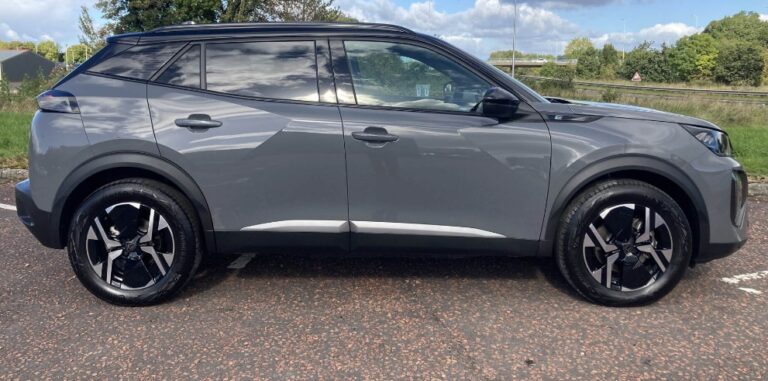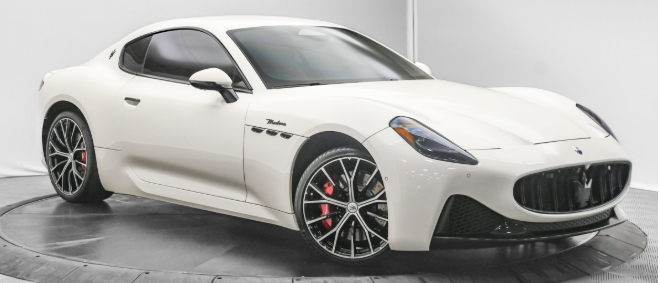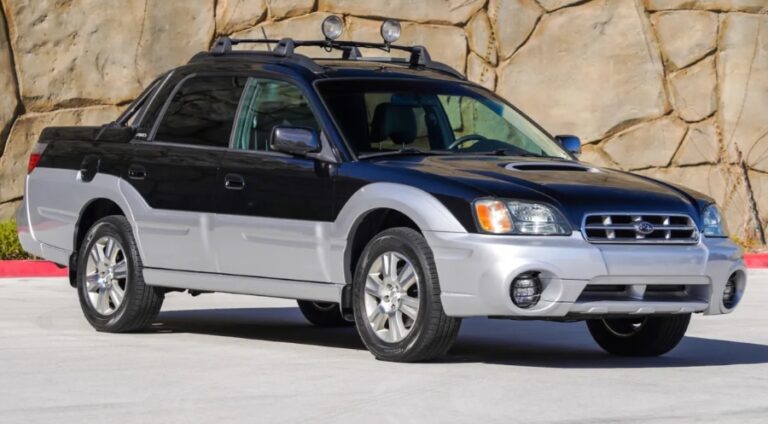Evolution of the Toyota FJ Cruiser
Of all the vehicles Toyota has produced in the 21st century, few have captured the imagination and courted controversy quite like the FJ Cruiser. A bold, retro-futuristic homage to a legendary past, the FJ was a delightful anachronism—a purpose-built off-road machine launched in an era of car-based crossovers. It was impractical, inefficient, and utterly charming. Its journey from a wild concept car to a sought-after cult classic is a fascinating study in automotive design, engineering, and the power of heritage. This is the evolution of the Toyota FJ Cruiser.
The Genesis: Reviving a Legend (2003-2006)
The story begins not on a dusty trail, but on the polished floor of the 2003 North American International Auto Show in Detroit. The early 2000s were awash with “retro” designs, as manufacturers looked to their past glories for future inspiration. Ford had the Thunderbird and was finalizing its new Mustang, Chevrolet had the SSR, and Chrysler’s PT Cruiser was a common sight. Toyota, wanting to tap into this trend and showcase its rugged heritage, unveiled a concept car called the “Rugged Youth Utility” (RYU).
Developed by Toyota’s Calty Design Research studio in California, the concept was an unapologetic tribute to the iconic FJ40 Land Cruiser of the 1960s and 70s. The design cues were unmistakable: the two round headlights set in a wide grille emblazoned with the block “TOYOTA” letters instead of the corporate logo, the nearly vertical windshield, the contrasting white roof, and the signature wrap-around rear quarter windows. The public and press reaction was overwhelmingly positive. What was intended as a design exercise suddenly had serious production potential.
Toyota gave the project the green light, tasking chief engineer Akio Nishimura with turning the beloved concept into a road-worthy reality. The challenge was to keep the show car’s spirit while building it on a modern, capable, and safe platform. The solution was found in Toyota’s robust global truck architecture. The FJ Cruiser would be built on a modified version of the Land Cruiser Prado platform, the same tough, body-on-frame foundation that underpinned the 4Runner and Tacoma. This decision immediately gave the FJ genuine off-road credentials, distancing it from softer, car-based competitors.
After three years of development, the production model was ready, astonishingly true to the original concept. The FJ Cruiser debuted for the 2007 model year, and the automotive world took notice.
.
NO MORE dead batteries with this:

.
The Foundation Years: Launch and Core Models (2007-2009)
The 2007 Toyota FJ Cruiser arrived with a single engine choice: the venerable 4.0-liter 1GR-FE V6. In its initial guise, it produced a healthy 239 horsepower and 278 lb-ft of torque. This powerplant was mated to one of three distinct drivetrain configurations, which defined the vehicle’s capability and appeal:
- 4×2 (Rear-Wheel Drive): Available only with a 5-speed automatic transmission, this was the base model intended for buyers who loved the style but didn’t require off-road prowess. It was the lightest and most fuel-efficient version.
- Part-Time 4×4: Paired with the 5-speed automatic transmission, this was the most common configuration. It featured a traditional, lever-operated transfer case allowing the driver to shift between 2H (rear-wheel drive), 4H (high-range 4WD), and 4L (low-range 4WD).
- Full-Time 4×4: Exclusively available with a 6-speed manual transmission, this was the enthusiast’s choice. It featured a Torsen limited-slip center differential that distributed power 40/60 front-to-rear under normal conditions but could redirect torque as needed. This system also came standard with a locking rear differential, a feature optional on the automatic 4×4.
Rather than traditional trim levels like LE or XLE, Toyota offered the FJ as a “monospec” vehicle with a variety of optional packages. This allowed for significant customization. Key packages included:
- Convenience Package: Added crucial features like remote keyless entry, cruise control, power mirrors with image-lights, a rear window wiper, and rear privacy glass.
- Upgrade Package (or “All-Terrain Package”): This built on the Convenience Package and was aimed at the serious off-roader. It included 17-inch alloy wheels, BFGoodrich Rugged Trail tires, the A-TRAC active traction control system, a 115V power outlet, a multi-information display (inclinometer, compass, outside temp), and on automatic models, the coveted locking rear differential.
- TRD Special Edition (2007): To mark its launch year, Toyota offered a limited-run TRD Special Edition. Finished exclusively in Black Diamond Pearl, it featured TRD-branded Bilstein shocks, TRD alloy wheels, BFG All-Terrain tires, and TRD performance exhaust.
In 2008, the first Trail Teams Special Edition package appeared. This would become an annual tradition, offering a turn-key, highly capable off-roader in a unique, single-color paint scheme. The 2008 model was finished in Iceberg white, featuring a body-colored roof (a departure from the standard white), blacked-out trim, and the full suite of off-road goodies from the Upgrade Package, plus extras like Bilstein shocks, rock rails, and special Trail Teams badging.
For 2009, minor changes occurred, including the addition of standard roll-sensing side-curtain airbags and active front headrests. The off-road packages remained largely the same.
The Refinement Era: More Power, More Colors (2010-2012)
The most significant update in the FJ Cruiser’s history arrived for the 2010 model year. The 4.0L V6 engine was upgraded with Dual VVT-i (Variable Valve Timing with intelligence) on both the intake and exhaust camshafts. This revision bumped horsepower to 259 hp (later rated at 260 hp) and slightly decreased peak torque to 270 lb-ft (later 271 lb-ft), but the power curve was broadened. More importantly, this change improved fuel efficiency and allowed the engine to run on regular unleaded gasoline instead of the previously recommended premium fuel.
The Trail Teams Special Edition continued its popular run, becoming the halo model for off-road enthusiasts. Each year brought a new, exclusive color and a curated set of equipment.
- 2010 Trail Teams Edition: Finished in Sandstorm, a flat tan color. It included color-matched interior trim, TRD wheels in a special gray finish, and the standard Trail Teams equipment like Bilstein shocks and BFG All-Terrain tires.
- 2011 Trail Teams Edition: Now officially a “package” rather than a limited edition model, it came in a striking Army Green. This year, the package was enhanced with trail-tuned Bilstein shocks and other minor equipment updates.
- 2012 Trail Teams Edition: The color for this year was a vibrant Radiant Red. By now, the package was a well-oiled machine, bundling all the best off-road options Toyota offered into one compelling, factory-built rig.
The Swan Song: The Ultimate Editions (2013-2014)
By 2013, rumors of the FJ Cruiser’s demise in the North American market were swirling. Sales had slowed, and its niche appeal, coupled with tightening fuel economy standards, made its future uncertain. Toyota decided to give it a proper send-off.
The 2013 Trail Teams Edition arrived in Cement Grey, a non-metallic gray that gave it a tough, industrial look. It continued the tradition of including Bilstein shocks, rock rails, BFG A/T tires, and the full suite of electronic aids.
For its final year in the United States, 2014, Toyota created the definitive version: the Trail Teams Ultimate Edition. This model was a tribute to the original FJ40 and a culmination of everything the FJ Cruiser had become.
- It was painted in a unique Heritage Blue, a color directly inspired by the classic blue of the original Land Cruiser.
- The front grille bezel was painted white, another direct callback to the FJ40.
- The suspension was upgraded to TRD-tuned Bilstein shocks with remote reservoirs in the rear, providing superior performance in high-speed off-road situations.
- A special TRD front skid plate was added for enhanced underbody protection.
- It featured unique 16-inch beadlock-style TRD wheels in a gunmetal gray finish.
- A special “Ultimate Edition” dash plaque signified its limited-production status.
Only 2,500 units of the Trail Teams Ultimate Edition were produced, marking a poignant and highly capable end to the FJ Cruiser’s eight-year run in the United States. Production for the U.S. market officially ceased in August 2014.
Life After America: The Global Farewell (2015-2022)
While the FJ Cruiser disappeared from American showrooms, it was far from extinct. Production continued at the Hamura factory in Japan for several other markets, including Australia, the Middle East, South Africa, and the Philippines, where its durability and off-road prowess were highly valued. These models largely carried on the specifications of the final U.S. versions, including the updated V6 engine.
In 2016, Toyota announced a “Final Edition” for its home market of Japan, signaling the true end of the line. The Final Edition FJ Cruiser, released in 2017, featured a unique beige exterior paint, matching beige interior trim, blacked-out exterior components, and special 20-inch wheels. This model provided a last hurrah for one of Toyota’s most characterful vehicles. Production for all remaining markets finally concluded in December 2022, bringing the FJ Cruiser’s remarkable 16-year global production run to a close.
A Lasting Legacy
The Toyota FJ Cruiser was never a mass-market sales leader. It was a niche vehicle with polarizing looks and practical compromises—notably its large blind spots and the cumbersome rear-hinged “suicide” doors. Yet, those who loved it, loved it passionately. It stood as a testament to purpose-driven design, offering world-class off-road capability straight from the showroom floor, wrapped in a package that oozed personality.
Today, the FJ Cruiser is a certified cult classic. Its legendary Toyota reliability, combined with its unique aesthetic and formidable trail performance, has led to exceptionally high resale values. The special editions, particularly the 2014 Trail Teams Ultimate Edition, are highly coveted by collectors and enthusiasts. The evolution of the FJ Cruiser is a story of a concept car that was too good to ignore, a production vehicle that stayed true to its roots, and a modern classic that carved its own path, leaving a legacy of fun, freedom, and undeniable capability.







